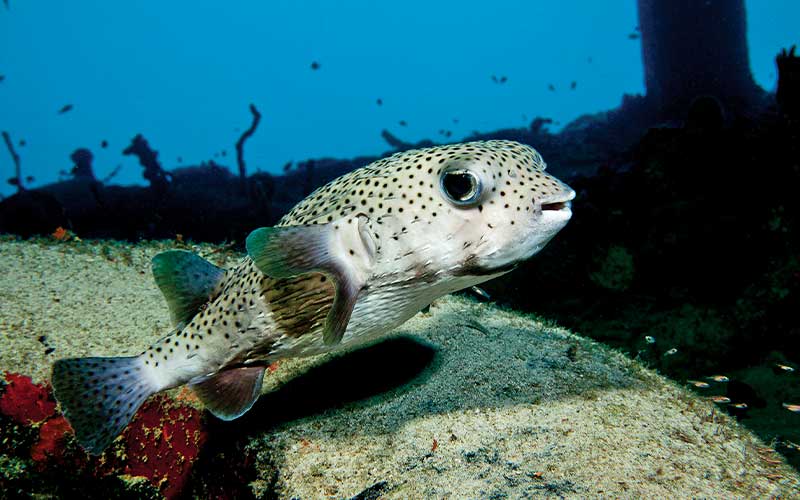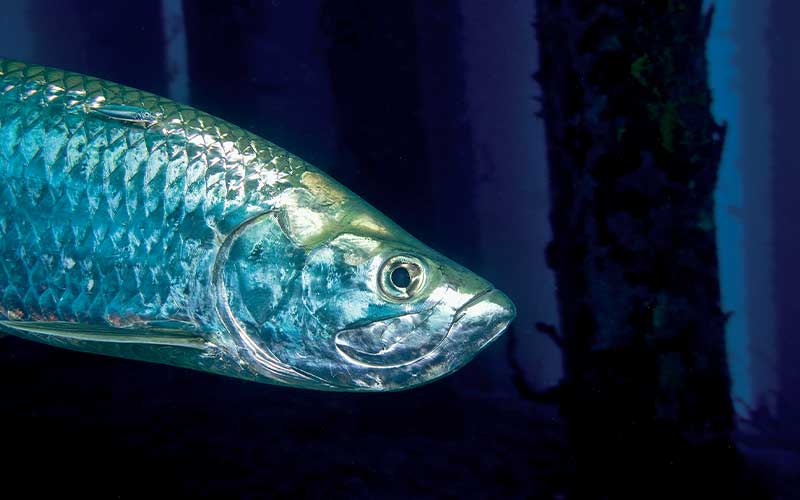Many fish and other marine life are poisonous for either part or all of their lives. Toxins may be produced directly by the animal or concentrated within certain organs or tissues as it feeds on other poisonous sea life. It can be tricky extricating these hazards; cooking or soaking are generally not reliable methods for destroying or removing toxins from marine life. Worse, tainted seafood may not have an abnormal taste, smell or appearance, looking completely normal to the unsuspecting consumer. Caution is indicated, and a strong suspicion of poisoning is appropriate in the setting of an unexpected illness.
While multiple forms of seafood poisoning may occur, the following is a list of the major poisoning illnesses and their treatment.
Scombroid
Scombroid poisoning occurs after inadequate preservation or refrigeration of many different fish species, including albacore, bluefin and yellowfin tuna as well as mackerel, wahoo, skipjack, mahi-mahi, sardine, anchovy, bluefish and bonito. Scombroid poisoning occurs when muscular tissues decompose in these animals, producing a histaminelike chemical involved in allergic reactions. Affected fish may have a metallic, peppery taste, although changes in taste, smell or appearance may not be noted.
Symptoms usually occur within two hours of ingestion and resemble those of an acute allergic reaction: itching, flushed skin, hives, swelling of the face and headache. Severe symptoms are rare but may include difficulty swallowing or breathing as well as shock (low blood pressure). Symptoms are usually self-limiting and may resolve within eight to 12 hours; however, reactions lasting several days have been described.
Scombroid should be managed medically in a manner similar to other allergic reactions: Mild reactions may be treated with diphenhydramine (Benadryl). For severe reactions, medical attention should be sought immediately.
Tetrodotoxin Poisoning
Tetrodotoxin-producing fish include porcupinefish and pufferfish (toadfish, blowfish, globefish, toado) as well as sunfish. Several of these species are considered delicacies in some regions including Japan, where specialized chefs are licensed in the preparation of these fish known as “fugu.”

While tetrodotoxin may be present throughout the fish’s body, it is concentrated in the liver, intestine, skin and reproductive organs. Tetrodotoxin poisoning may occur rapidly, with symptoms manifesting anywhere from 10 minutes to four to six hours after ingestion. Symptoms begin with numbness or tingling around the mouth, which may progress to generalized weakness and lightheadedness. Vomiting, diarrhea, abdominal pain and excessive drooling may also occur. Progressive weakness and even paralysis associated with difficulty breathing or swallowing may also be present. Victims of tetrodotoxin poisoning may develop shock, and of those who do, 60 percent die even with medical support.
Suspicion of tetrodotoxin poisoning requires immediate medical evaluation. Breathing support may be required, and paralyzed patients may still be completely awake and aware. Prevention is key, and it is wise to avoid eating puffers, even when prepared by an expert chef.
Ciguatera Poisoning
Ciguatera poisoning involves tropical and semitropical coral reef fish. Larger and older fish are more toxic than others, and while all tissues of an affected fish can be trouble, the liver and reproductive organs present the most danger.
The greatest concentration of affected fish hail from the Caribbean as well as the Indo-Pacific and include groupers, parrotfishes, surgeonfish, triggerfish, jacks, wrasses and barracuda, although many other species of reef fish have been implicated. The odor, appearance and taste of the fish are not affected by toxins.
The onset of symptoms typically occurs within several hours of ingestion. They manifest as diarrhea, nausea, vomiting and abdominal pain. Severe symptoms are rare but may include seizures and body aches as well as difficulty breathing and heart rhythm and blood pressure problems. Later symptoms may occur days after the ingestion and include numbness or tingling of the extremities and the mouth or tongue, including dental pain that may mimic the sensation of loose teeth. A typical symptom is the reversal of hot and cold perception. Some of these symptoms may persist for weeks or months.
Victims of suspected ciguatera poisoning should be evaluated immediately by medical personnel. Mild cases may be treated by diphenhydramine to relieve itching, but it’s best to avoid ciguatera altogether. Don’t eat larger or older fish of any reef species coming from known ciguatoxic regions. Unfortunately, there are no reliable, commonly available tests to determine if a fish is ciguatoxic.
Clupeotoxin

Clupeotoxic fish are typically found in the Caribbean, Africa and the Indo-Pacific. Most affected fish are plankton-feeders and include herring, tarpon, bonefish, sardines and anchovies. Toxicity increases during summer months, and internal organs are highly toxic. Symptom onset occurs within minutes to hours of ingestion.
Symptoms include a metallic taste, vomiting, nausea, diarrhea, sweating, muscle cramps, tingling and numbness. Finger and toe tips as well as the lips or nose may demonstrate a blue discoloration. Clupeotoxin does not impart any abnormal taste, odor or appearance to affected fish. Shock may occur, and death has been observed in as many as 45 percent of severe cases.
Treatment for clupeotoxin poisoning should include immediate medical evaluation and care. Prevention includes avoidance of potentially clupeotoxic fish, particularly during summer months.
Paralytic Shellfish Poisoning
Paralytic shellfish poisoning is not limited to any particular region and may occur after ingestion of a variety of shellfish including common mollusks, chitons, limpets, starfish and some crabs. As with other marine poisonings, the internal organs of affected organisms concentrate toxins. The toxin is not destroyed by cooking or heat, and there is no noted change in odor, appearance or taste of the shellfish.
Symptoms of paralytic shellfish poisoning may be rapid and severe, initially involving numbness and tingling of the mouth and lips before progressing to other body parts. Clumsiness, blurred vision, headache and weakness may progress to difficulty swallowing or breathing in severe cases. Abdominal pain, nausea, vomiting and diarrhea are common. Breathing difficulty and loss of consciousness may occur; however, paralyzed patients may retain consciousness for some time. Death may occur in up to 12 percent of severe cases as a result of respiratory failure.
Treatment involves immediate medical care, including oxygen and, possibly, artificial respiration. A popular method of prevention is adhering to the adage of eating shellfish only in months containing the letter “r.”
Other Possibilities
Illness following ingestion of seafood may come from a variety of causes, including poisonings. Other potential causes of illness include infections, bacteria or viruses that may reside in marine creatures and cause gastroenteritis after ingestion. These illnesses are typically self-limiting.
Poisonings such as those described here cause substantial illness and, in some cases, even death. An awareness of these poisonings as well as their prevention is key. All suspected cases of severe marine animal poisoning should immediately be brought to the attention of medical professionals.
© Alert Diver — Q4 Fall 2011